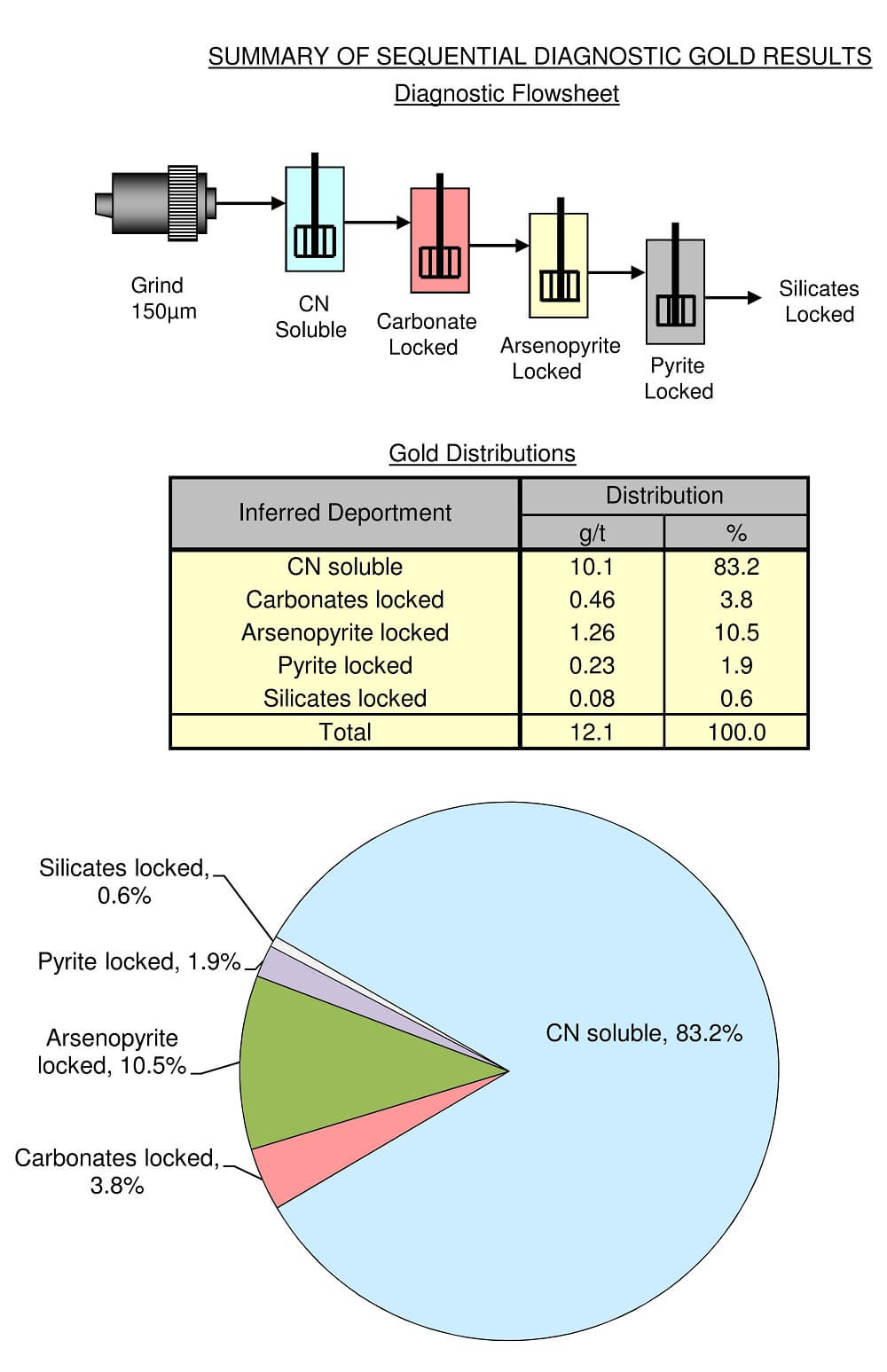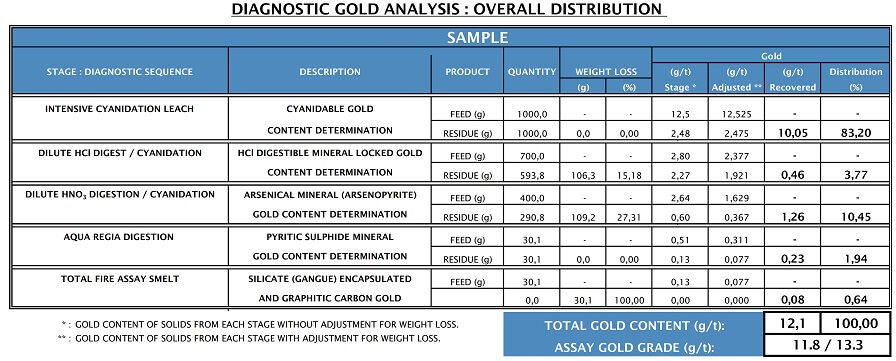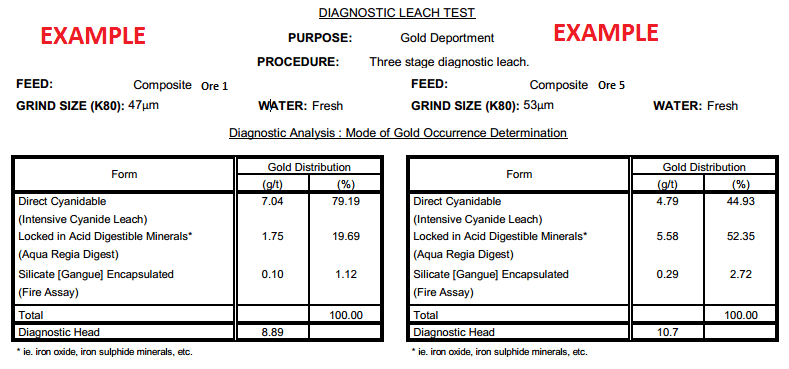A Gold Diagnostic Leach Test is used to evaluate the distribution or deportment of gold in various minerals is determined by a series of selective leaches, usually by increasingly stronger oxidative acid leaches. Between each stage, cyanide leaching is used to extract the released gold. In this study a total of ten analysis stages were carried out for the 8 composite at a grind size of 150µm P80.
The diagnostic leach results indicate that, on average, about 64 percent of the gold content occurred as free cyanidable gold. Lithology composite ore 4 and 5 were less than 50%. The remaining gold was associated with acid digestible minerals, such as iron sulphides and iron oxides, being, on average, about 27%. Lithology composite on Ore 4 had a significant proportion of the gold content locked in gangue minerals, being about 55% of the gold in the feed.
More on Diagnostic Gold Leach Test Work.
Diagnostic Gold Analysis
In order to determine the nature of the gold occurrence and associations within the ore; we do a multi-stage diagnostic analysis where a 1 kg portion was ground to a nominal grind P80 of 150 um and subjected to a sequential gold extraction test. Test conditions, assays and mass balances are supplied below. Here is an EXAMPLE.
Figure 1 depicts the analysis flow sheet and summarises the inferred deportment (occurrence) of gold with the respective distributions expressed in both grams per ton and percentage values.
The results show that a maximum of 83.2% of the contained gold is cyanide soluble (at a P80 of 150um). Note however that this result was obtained under intensive conditions with a 5% NaCN solution concentration. The next highest distribution of 10.5% is locked within arsenopyrite sulphides and therefore refractory to conventional cyanidation.










